N-Hydroxy-1,8-naphthalimide
- CAS NO.:7797-81-1
- Empirical Formula: C12H7NO3
- Molecular Weight: 213.19
- MDL number: MFCD00065062
- EINECS: 232-251-9
- SAFETY DATA SHEET (SDS)
- Update Date: 2024-12-18 14:08:52
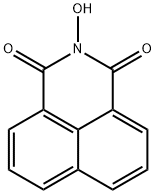
What is N-Hydroxy-1,8-naphthalimide?
Chemical properties
SLIGHTLY YELLOW TO BEIGE-BROWN CRYST. POWDER
The Uses of N-Hydroxy-1,8-naphthalimide
N-Hydroxy-1,8-naphthalimide, also known as N-Hydroxynaphthalimide, is an amide compound used as a raw material for organic synthesis or as a solvent for chemical reactions, and also as an organocatalyst in aerobic oxidation. Its derivative N-hydroxynaphthalimide diethyl phosphate is used in the treatment of bobwhite quail Capillaria contorta infection[1-2].
The Uses of N-Hydroxy-1,8-naphthalimide
It is used in chemical research & chemical intermediate.
References
[1] DR. KEXIAN CHEN. Theoretical Design of Multi-Nitroxyl Organocatalysts with Enhanced Reactivity for Aerobic Oxidation[J]. Chemphyschem, 2014. DOI:10.1002/cphc.201301141.
[2] R. B. DAVIS. An effective anthelmintic in treatment of quail infected with Capillaria contorta.[J]. Avian Diseases, 1969. DOI:10.2307/1588547.
Properties of N-Hydroxy-1,8-naphthalimide
| Melting point: | 245 °C |
| Boiling point: | 353.17°C (rough estimate) |
| Density | 1.2911 (rough estimate) |
| refractive index | 1.4500 (estimate) |
| storage temp. | Sealed in dry,Room Temperature |
| form | powder to crystal |
| pka | 7.44±0.20(Predicted) |
| color | Light orange to Yellow to Green |
| Water Solubility | Insoluble in water. |
| BRN | 178595 |
| CAS DataBase Reference | 7797-81-1(CAS DataBase Reference) |
| EPA Substance Registry System | 1H-Benz[de]isoquinoline-1,3(2H)-dione, 2-hydroxy- (7797-81-1) |
Safety information for N-Hydroxy-1,8-naphthalimide
| Signal word | Warning |
| Pictogram(s) |
 Exclamation Mark Irritant GHS07 |
| GHS Hazard Statements |
H315:Skin corrosion/irritation H319:Serious eye damage/eye irritation H335:Specific target organ toxicity, single exposure;Respiratory tract irritation |
| Precautionary Statement Codes |
P261:Avoid breathing dust/fume/gas/mist/vapours/spray. P264:Wash hands thoroughly after handling. P264:Wash skin thouroughly after handling. P280:Wear protective gloves/protective clothing/eye protection/face protection. P304+P340:IF INHALED: Remove victim to fresh air and Keep at rest in a position comfortable for breathing. P305+P351+P338:IF IN EYES: Rinse cautiously with water for several minutes. Remove contact lenses, if present and easy to do. Continuerinsing. P405:Store locked up. |
Computed Descriptors for N-Hydroxy-1,8-naphthalimide
New Products
(S)-3-Aminobutanenitrile hydrochloride 4-Methylphenylacetic acid N-Boc-D-alaninol N-BOC-D/L-ALANINOL Tert-butyl bis(2-chloroethyl)carbamate 3-Morpholino-1-(4-nitrophenyl)-5,6-dihydropyridin- 2(1H)-one Furan-2,5-Dicarboxylic Acid Tropic acid 1-Bromo-3,5-Di-Tert-Butylbenzene S-2-CHLORO PROPIONIC ACID ETHYL ISOCYANOACETATE 2-Bromo-1,3-Bis(Dimethylamino)Trimethinium Hexafluorophosphate 4-IODO BENZOIC ACID 3-NITRO-2-METHYL ANILINE 1-(2,4-DICHLOROPHENYL) ETHANAMINE (2-Hydroxyphenyl)acetonitrile 4-Bromopyrazole 2-(Cyanocyclohexyl)acetic acid 4-methoxy-3,5-dinitropyridine 1-(4-(aminomethyl)benzyl)urea hydrochloride 2-aminopropyl benzoate hydrochloride diethyl 2-(2-((tertbutoxycarbonyl)amino) ethyl)malonate tert-butyl 4- (ureidomethyl)benzylcarbamate Ethyl-2-chloro((4-methoxyphenyl)hydrazono)acetateRelated products of tetrahydrofuran
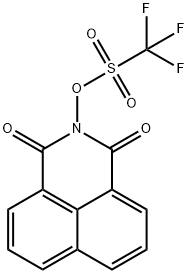

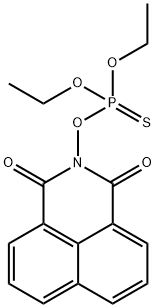

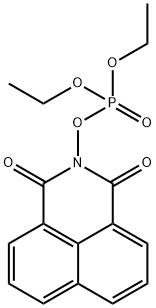

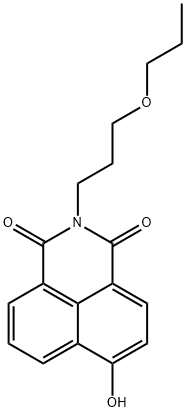

You may like
-
 N-Hydroxy-1,8-naphthalimide CAS 7797-81-1View Details
N-Hydroxy-1,8-naphthalimide CAS 7797-81-1View Details
7797-81-1 -
 n-Hydroxy napthalimide sodium salt CAS 7797-81-1View Details
n-Hydroxy napthalimide sodium salt CAS 7797-81-1View Details
7797-81-1 -
 N-HYDROXYNAPHTHALIMIDE CAS 7797-81-1View Details
N-HYDROXYNAPHTHALIMIDE CAS 7797-81-1View Details
7797-81-1 -
 1975-50-4 98%View Details
1975-50-4 98%View Details
1975-50-4 -
 2-HYDROXY BENZYL ALCOHOL 98%View Details
2-HYDROXY BENZYL ALCOHOL 98%View Details
90-01-7 -
 2-Chloro-1,3-Bis(Dimethylamino)Trimethinium Hexafluorophosphate 221615-75-4 98%View Details
2-Chloro-1,3-Bis(Dimethylamino)Trimethinium Hexafluorophosphate 221615-75-4 98%View Details
221615-75-4 -
 14714-50-2 (2-Hydroxyphenyl)acetonitrile 98+View Details
14714-50-2 (2-Hydroxyphenyl)acetonitrile 98+View Details
14714-50-2 -
 118753-70-1 98+View Details
118753-70-1 98+View Details
118753-70-1